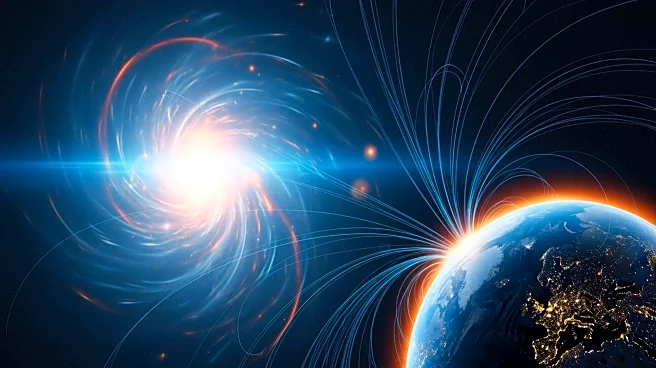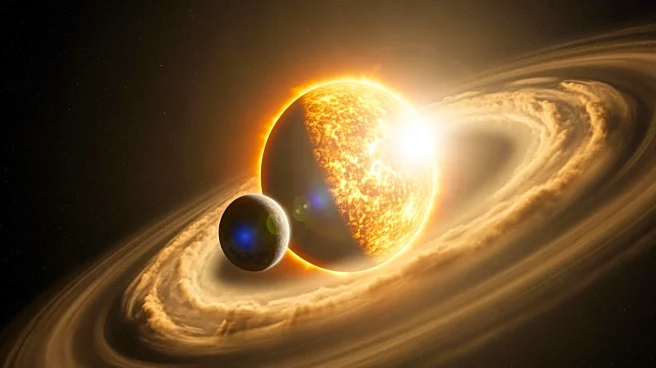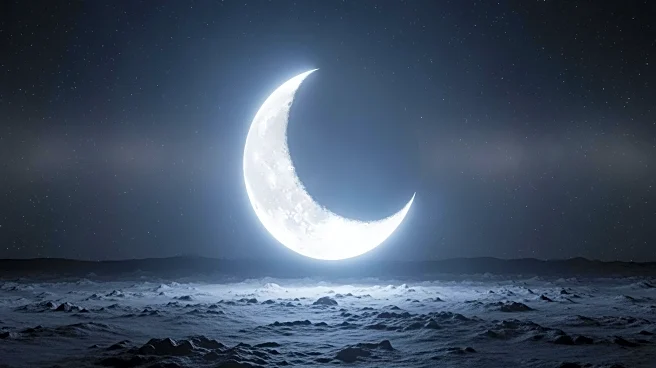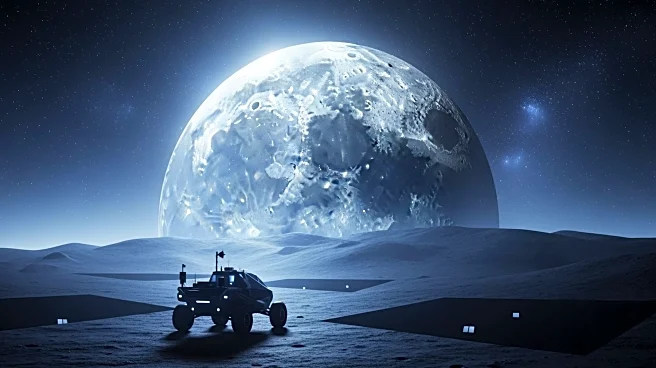What's Happening?
A recent study published in Science has reconstructed the chemical composition of Theia, the ancient planetary body that collided with early Earth, leading to the formation of the Moon. Researchers from the Max Planck Institute for Solar System Research and
the University of Chicago analyzed lunar samples returned by the Apollo missions, focusing on iron isotope ratios to trace Theia's origins. The study suggests that Theia originated in the inner Solar System, possibly forming closer to the Sun than Earth. This collision, occurring about 4.5 billion years ago, significantly altered Earth's size, structure, and orbit, ultimately resulting in the Moon's creation. The research involved measuring isotopic ratios in Earth and Moon rocks, revealing identical signatures that help reconstruct Theia's likely composition and formation region.
Why It's Important?
Understanding Theia's composition and origin provides crucial insights into the early Solar System's dynamics and the processes that led to the formation of the Moon. This knowledge enhances our comprehension of planetary formation and the conditions that existed in the inner Solar System. The findings could influence future lunar exploration missions and the study of planetary collisions, offering a clearer picture of Earth's early history and the factors that shaped its development. Additionally, the study's methodology, using isotopic analysis, could be applied to other celestial bodies, advancing the field of planetary science.
What's Next?
Further research may focus on refining the models of Theia's collision with Earth, exploring alternative scenarios that could explain the isotopic similarities between Earth and the Moon. Scientists might also investigate other planetary bodies in the Solar System to compare their isotopic compositions, potentially uncovering new information about their origins and histories. The study's findings could prompt additional lunar missions to collect more samples for analysis, enhancing our understanding of the Moon's formation and its relationship with Earth.
Beyond the Headlines
The study raises questions about the broader implications of planetary collisions in the Solar System. Understanding these events could provide insights into the formation of other moons and planetary systems beyond our own. The research also highlights the importance of isotopic analysis in reconstructing the history of celestial bodies, offering a powerful tool for unraveling the mysteries of the universe. As scientists continue to explore the origins of the Moon, they may uncover new information about the conditions necessary for life and the potential for similar processes occurring elsewhere in the cosmos.













